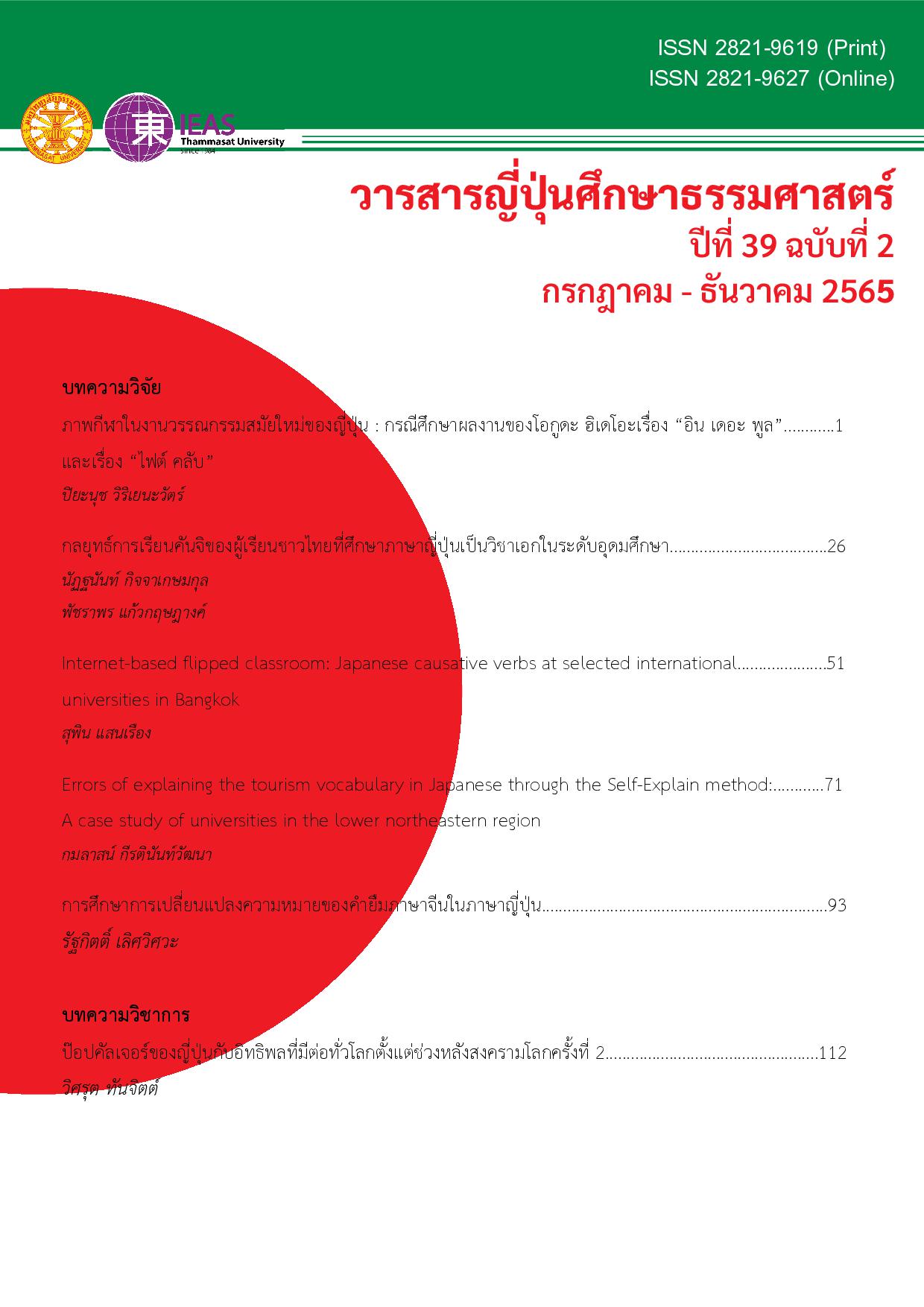A Study of Changes in the Meaning of Chinese Loanwords in Japanese
Keywords:
Loanwords, Meanings, Japanese, ChineseAbstract
The purpose of this research is to study the changes in the meaning of Chinese loanwords in Japanese. This is because the Japanese language has borrowed many words from the Chinese language since ancient times. The study of changes in the meaning of loanwords reflects the identity of each language, the concepts, the values and cultures of each society. The study found that the characteristics of changes frequently found in the meaning of Chinese loanwords in Japanese are: 1) pronunciation, 2) types of words, 3) rhetoric, and 4) terminology, etc. While the type of changes in the meaning of Chinese loanwords are: 1) synonyms, but used in different contexts or positive-negative meanings, 2) similar meanings, 3) antonyms, 4) narrower meanings, 5) broader meanings, and 6) eccentric meanings, etc.
Downloads
References
ชลิตา จินตสุเมธ. (2559). คำยืมในภาษาจีนกลาง. จุฬาลงกรณ์มหาวิทยาลัย.
ธัญญรัตน์ ปาณะกุล. (2555). ภาษาศาสตร์ภาคประวัติเบื้องต้น. มหาวิทยาลัยรามคำแหง.
รัฐกิตติ์ เลิศวิศวะ. (2560). การศึกษาเปรียบเทียบอักษรคันจิในภาษาญี่ปุ่นและอักษรจีนในภาษาจีน. อินทนิลทักษิณสาร, 12(2), 185-197.
วรวุฒิ จิราสมบัติ. (2557). คันจิศึกษา. จุฬาลงกรณ์มหาวิทยาลัย.
Tranter, N. (2009). Graphic loans: East Asia and beyond. Word, 60(1), 1-37.
Zhao, J. (2006). Japanese loanwords in modern Chinese. Journal of Chinese Linguistics, 34(2), 306-327.
黄力遊. (2004)『日汉同形异义语词典』 外语教学与研究出版社.
郭明辉. (2020)『日汉同形异义语词典』 北京语言大学出版社.
万玲华. (2004)『中日同字词比较研究』 华东师范大学.
汪大捷. (1986)『同形异义日语汉字词典』 中国农业机械出版社.
王永全. (2009)『日汉同形异义语词典』 商务印书馆.
于冬梅.(2012)『中日同形异义汉字词研究』 吉林大学文学院.
Downloads
Published
Issue
Section
License
Copyright (c) 2022 Thammasat Journal of Japanese Studies

This work is licensed under a Creative Commons Attribution-NonCommercial-NoDerivatives 4.0 International License.




